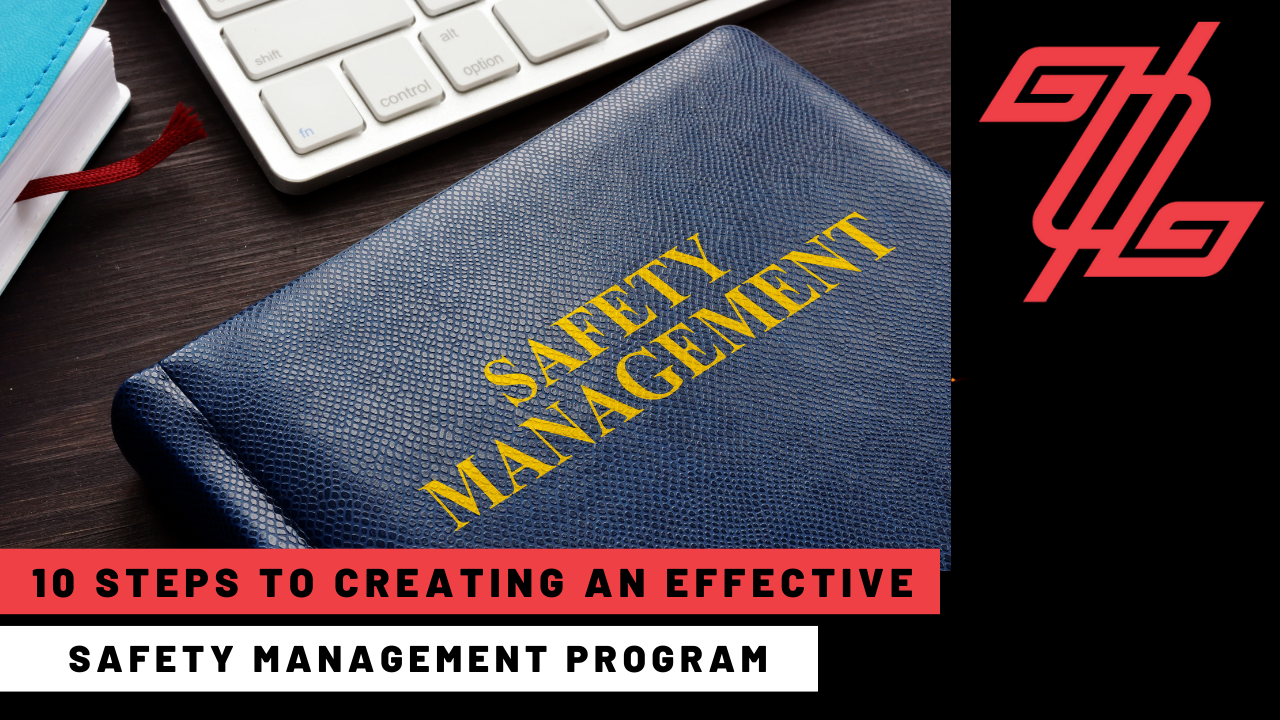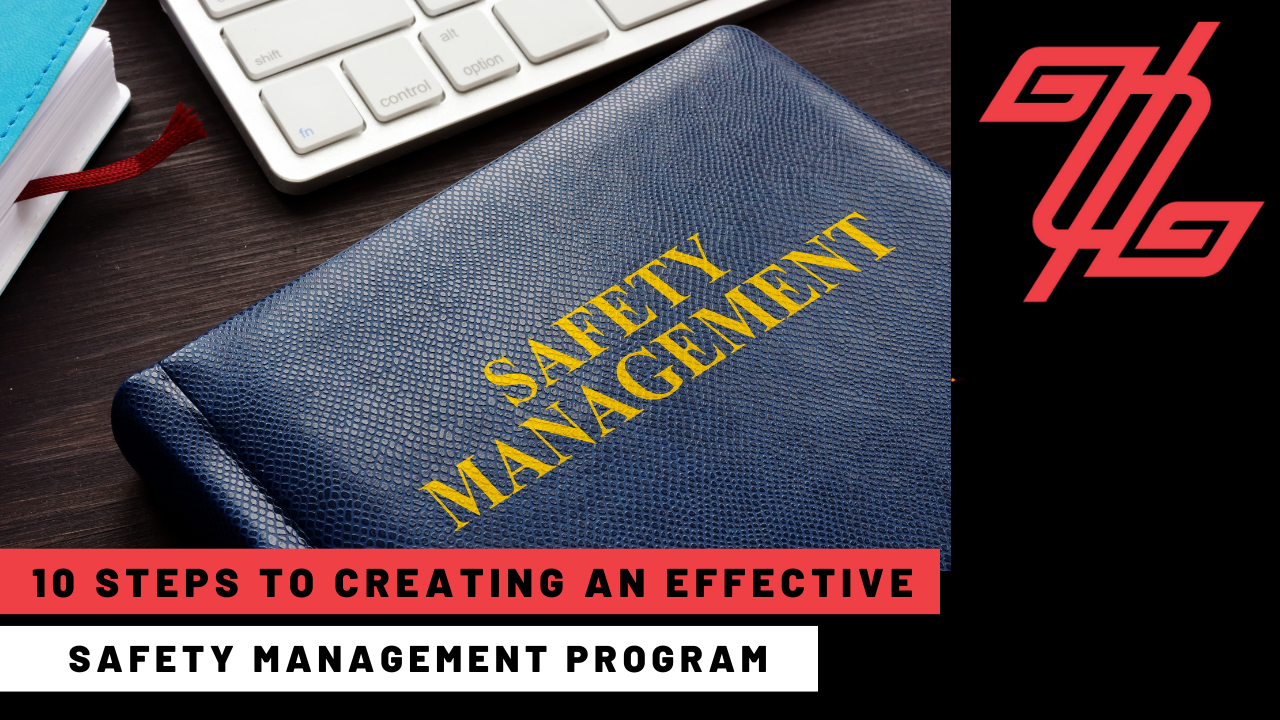10 steps to creating a strong Safety Culture

As mentioned in our previous blog Safety should be a top priority for any business. Of course, without a safe working environment, employees are at risk and the company can face serious financial penalties, but a Safety Culture can mean so much more. According to WorkSafeBC "Building a strong health and safety culture will have a positive impact on your workers, your bottom line, and public perception" This is why it's important to have an effective safety management program in place. In this blog post, we will outline 10 steps to creating an effective safety management program and ultimately developing a strong safety culture within your organization.
1: Management Commitment
The first and MOST important step in building Safety Culture is management commitment. You can not build an effective or successful Safety Culture without leaders. Management needs to set the tone for the organization and must make sure that everyone is on board with your health & safety program. They should also provide resources and support to ensure that the program is effective.
2: Hazard Assessment
In order to build a practical safety management program, you must first conduct a complete hazard assessment of your operations. As noted on the US Department of Labour (OSHA) website one of the "root causes" of workplace injuries, illnesses, and incidents is the failure to identify or recognize hazards that are present, or that could have been anticipated. Identifying existing and potential hazards in the workplace is the only way you can develop effective strategies to mitigate these risks. In doing so it is important to develop a risk matrix to identify the level of risk in all tasks performed. OSHA has created a simple guide on how to collect existing information about workplace hazards, and what should be included as part of your hazard assessments.
3: Hazard Control
The next step is to develop controls to mitigate these risks. The goal is to develop methods of efficiently reducing the likelihood of injury or illness in the workplace and at the same time maintain productivity. This may include things like changing the way work is done, providing safety equipment, or implementing new policies and procedures. As all hazards simply can not be eliminated, a widely excepted system to gauge the effectiveness of these methods is the Hierarchy of Controls.
4: Inspections, Work tours & Maintenance
Another important part of an effective safety management program is to complete regular inspections, work tours, and maintenance. This helps to ensure that hazards are controlled and will help identify changes in workplace conditions. Should changes to workplace conditions be identified a review of your hazard assessment should be completed and your hazard controls adapted immediately. For reference, CCOHS has outlined examples of what should be included in your inspections.
5: Emergency Response Planning
In the event of an emergency, it is important to have a plan in place. This plan should be designed to protect employees and minimize damage to the workplace. Make sure you look at more than just fire and first aid emergencies, consider all hazards that could affect your work operations. This can include Harassment and Violence, Floods, Blizzards, or other weather extremes depending on your location. The plan should be reviewed on a regular basis and updated as needed. Most importantly it is crucial that the roles and responsibilities of all workers are communicated effectively. Ready, the national public service, has outlined 10 Steps for Developing the Emergency Response Plan.
6: Qualifications, Training, and Competency
Employees must be properly trained and qualified to do their jobs. This helps to ensure that they are able to work safely and effectively. Training should be ongoing, and employees should be kept up-to-date on new procedures and changes in the workplace. In addition, employees should be competent in their jobs. This means they have the knowledge, skills, and abilities to do their jobs safely.
7: Investigate Incidents
Investigating incidents is an important part of an effective safety management program. According to the OSHA website "Investigating a worksite incident- a fatality, injury, illness, or close call- provides employers and workers the opportunity to identify hazards in their operations and shortcomings in their safety and health programs. Most importantly, it enables employers and workers to identify and implement the corrective actions necessary to prevent future incidents."
8: Other Affected Parties- Visitors, the public and other employed persons (Contractors)
Safety doesn't just apply to employees, as outlined in a recent OH&S article other employed persons such as Security, Contractors, visitors, and members of the general public should also be considered when developing a safety management program. Make sure you have procedures in place to protect them from hazards.
9: Joint Health and Safety Committee or Safety Representative
Depending on the size of your company an effective safety management program should have either a Safety Representative or a Joint Health and Safety Committee (JHSC). This representative or committee is responsible for identifying hazards, developing controls, and investigating incidents. The JHSC should be made up of representatives from both management and employees. For more information please refer to the OSHA and/or CCOHS websites.
10: Program Administration
Last but not least, the safety management program should be well-administered. This means that it is regularly reviewed and updated as needed. Safety records should be kept up-to-date, and employees should be aware of the program and their roles in it.
Conclusion
An effective safety management program is essential to building a strong safety culture. By following these ten steps, you can create a program that will help keep your workplace safe. Remember, Safety is everyone's responsibility.
“Culture is the bedrock, the final wall, against which one leans one’s back in a godforsaken chaos."
-J.C. Powys, The Meaning of Culture
If you have any questions about Safety Management or would like assistance creating a program for your workplace, please contact us.

